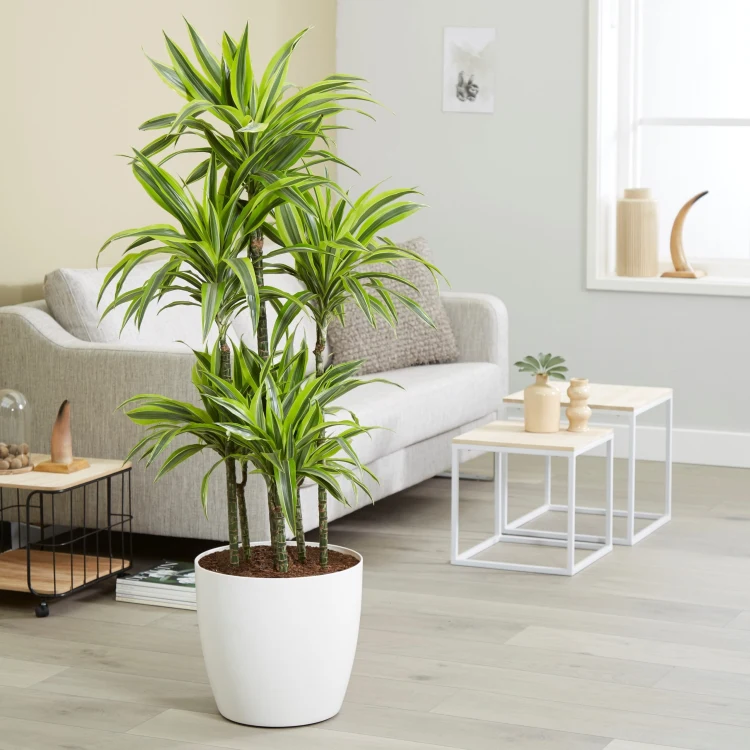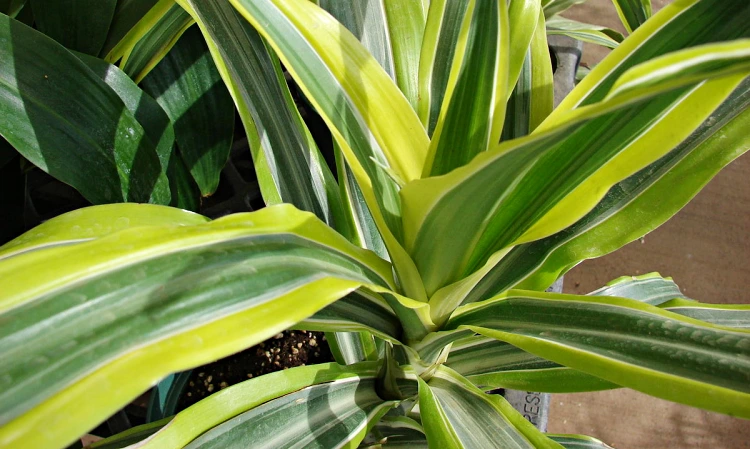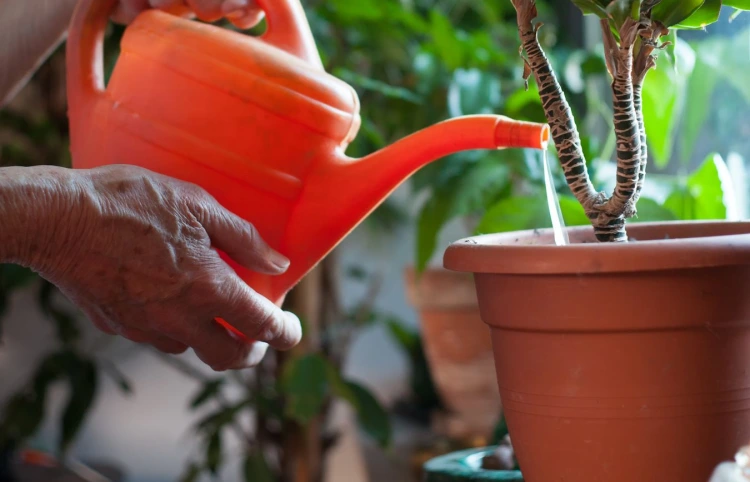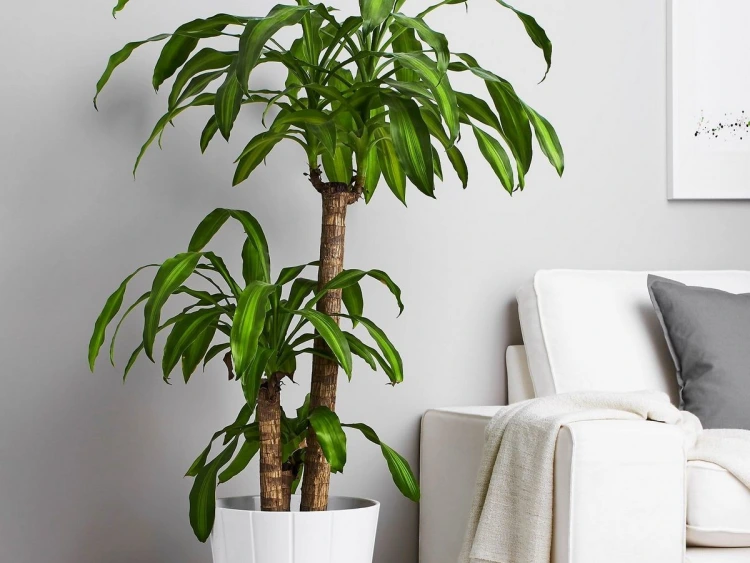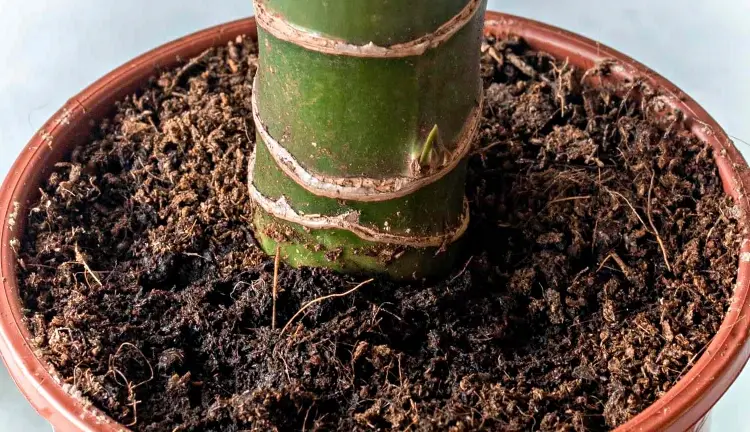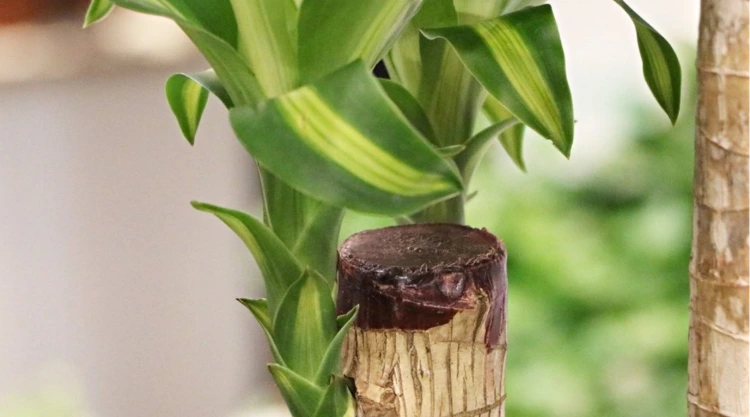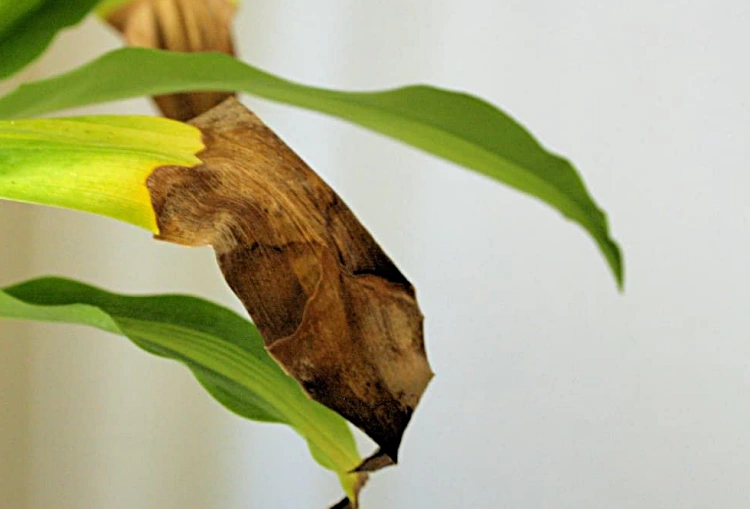Dracaena Fragrans is very popular with florists and is unpretentious in its care. Due to its impressive size, pleasant distinct scent and lovely appearance, it is preferred and grown in homes as well as in offices and other spacious places! If you too have decided that you want to grow this plant in your home, you will most likely find this article useful as it will help you understand how to care for Dracаena Fragrans!
How to care for Dracaena Fragrans at home?
The beauty of Dracaena Fragrans is not its only advantage. As already mentioned, it is unpretentious in terms of care – it is a houseplant that requires little effort. In fact, all types of dracaena are very suitable for growing indoors. They easily tolerate being placed in partial shade, grow well if placed next to West or East facing windows. However, in order for your plant to grow healthy and delight you with its beautiful presence, you must follow a few basic rules, which we have listed below! But before that, let’s take a closer look at the characteristics of this type of dracaena!
Characteristics
Dracena Fragrans is a shrubby plant whose leaves make it a good air purifier. In domestic conditions it reaches 1-2 meters (3-6 ft), and in its natural habitat (tropical countries of West Africa) its height can reach up to 6 meters (19 ft). The leaves are glossy and green, sword-shaped, with light green or yellow stripes. Older plants have almost no lower leaf layer, so the stem is visible at the bottom. It is important to know that it does not bloom under indoor conditions. Now, it’s time to learn how to care for Dracaena Fragrans at home!
Light
In order for the dracaena to grow properly, it needs to receive sufficient light, but by no means direct light, as it can damage the leaves. We recommend that you place it at some distance from the window, but not in a very dark place, as it will not grow in that case and may even die.
Temperature
During the day, the optimum temperature conditions for dracaena are between 68°F to 75°F (20°C – 24°C). The night temperature can drop to 60°F (16°C). Be extremely careful during winter as the temperature should not be lower than 60°F – 64°F (16°C – 18°C). Do not place the pot with the dracaena on cold window sills and floors, the leaves should not touch cold glass. Protect the plant from both cold draughts in winter and from warm and dry air flow from electric heaters.
Water
Proper watering is the most important aspect of caring for this plant. Water it moderately and never too much as the roots can rot. The most common cause of the plant’s death is waterlogging, too frequent watering when the soil is constantly wet. On the other hand, most varieties tolerate short drying periods well. And therefore, to prevent root diseases, water the dracaena rarely. Only when you see that the top layer of soil in the pot has dried out is it time to water it again. Dracaena Fragrans needs more watering during the growing season when it is actively growing and consuming more water. In fall and winter, when the plant is dormant, you can water it less often. Yellowing and dropping of many leaves in a short period are signs of an incorrectly chosen watering regime.
Humidity
Dracaena likes high humidity because of its origin. However, it is very likely to adjust itself to the room conditions. Excessively dry air is not good for it at all and humidity level needs to be raised, otherwise, the dracaena’s leaves may begin to droop. Mist your plant every few days and wipe the dust off the leaves. You can also use a humidifier, but do not place it too close to the plant. The cold steam will cause many small white spots to appear on the leaves.
Soil
Quality soil is essential for the proper growing of Dracena Fragrans. It is best to use ready-made mixes for dracaena or palms. You can also prepare suitable soil by combining 3 parts potting soil, 1 part peat and 1 part sand. Soil mixed with some perlite and fertilizer that does not contain boron or calcium superphosphate will encourage good growth. Also, do not plant the dracaena in moist soil as this can cause rotting. Ceramic pots with plenty of drainage holes are great for growing dracaena.
Feeding and fertilisation
It is best to fertilise the dracaena once every two weeks in spring and summer. In fall, it is better to do it at least once a month, and in winter it is not necessary at all. A water-soluble fertiliser that does not contain phosphorus is most convenient. Be careful and always follow the dosage instructions on the packaging.
Pruning
Dracena Fragrans does not require frequent pruning. At the bottom of the stem, the old leaves begin to dry, requiring their removal, while the new leaves continue to grow. If the plant is too tall, it can be pruned (best in spring) with a knife or sharp garden shears to achieve the desired height. After a few weeks, new leaves will grow.
Difficulties in growing
It is necessary to take care of Dracena Fragrans, otherwise a number of serious diseases can occur, which can lead to the death of the whole plant. Here are the most common growing difficulties:
- Due to frequent and abundant watering, rotting of the roots, stems and wilting of the leaves can occur. It is therefore very important not to overwater!
- Direct sunlight does not affect the plant well, the leaves begin to yellow and wither. With insufficient light, negative changes also occur.
- The dracaena should not stand for long periods in cold, low temperatures. Frost is recognised by dark brown spots on the leaves.
- The lack of soil fertilizer will negatively affect the growth of the plant.

